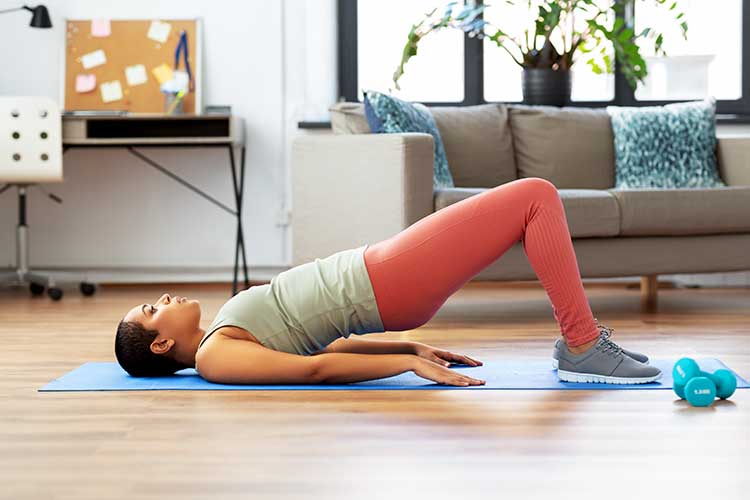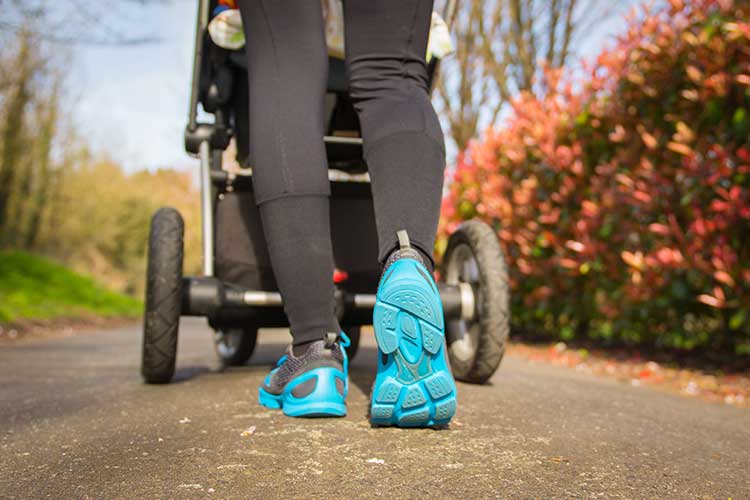Promoting Postnatal Exercise
Published: 24 February 2021

Published: 24 February 2021

In recent years, little has changed in the way that postnatal exercises are taught and promoted.
Yet, promoting exercise to aid mental and physical wellbeing post-delivery remains as important as ever.
There’s never been any doubt that postnatal exercises are essential to the transition into healthy parenthood. Not only do they help to restore physical health, but they also help to relieve stress, improve sleep and prevent postnatal depression.
Of course, every person is different, and each will follow their own unique pathway to regain their pre-pregnancy fitness levels. What is constant, however, is the need for targeted support, encouragement and education to help busy parents regain their stamina and cope with the demands of parenthood.

Virtual consultations and video classes are here to stay. Technology enables care to be delivered more cost-effectively by reducing the risk of infection transmission, freeing up valuable clinical space and bypassing the costs and inconvenience of travel.
For new parents, saving costs and effort can make all the difference between adhering to an exercise regime or giving up due to lack of support.
A 2018 study by Vincze et al. found that video consultations delivered by midwives and physiotherapists for an 8-week postnatal exercise program resulted in statistically significant improvements in waist circumference, body composition, cardiorespiratory fitness, dietary intake and physical activity.
Pelvic floor exercises can be started in the immediate postpartum period to begin regaining strength in the stretched pelvic muscles as soon as possible (Inge et al. 2022).
Despite this, a 2018 study discovered that one-third of birthing parents don’t do pelvic floor exercises despite the reported benefits. In fact, out of the 1,000 people surveyed, only 29.2% of people who were either pre or post-delivery intended to practice the exercises (Ewers 2018).
The advantages of early pelvic floor muscle training (PFME) to prevent incontinence and prolapse in later life are well-documented.
After childbirth, about one-third of people experience urinary incontinence, and up to 1 in 10 experience faecal incontinence. This is why promoting PFMT is of such importance (Woodley et al. 2020).
The Royal College of Midwives (2020) succinctly summarises this with the following recommendations:

It’s thought that exercise could be considered as a treatment for people who develop mild to moderate depression during the postnatal period (Daley et al. 2012).
A systematic review and meta-analysis by Daley et al. (2009) suggested that compared to no exercise, those who exercised regularly during the postnatal period were able to reduce the symptoms of postnatal depression. However, although the trials were generally of a good methodological standard, their limited number and small size mean that the results may be imprecise and should be treated with caution.
Further complicating the results, many participants were also receiving other treatments, which led Daley et al. (2009) to conclude:
‘If exercise is to be recommended to women with postnatal depression, it should be as an adjunctive treatment, as no evidence was found to support the effectiveness of exercise alone as a replacement for standard treatment.’
Further research with longer periods of follow-up is needed to clarify what types of exercise are most effective.
Saligheh et al. (2017) have also explored the impact of exercise on postnatal depression and, like many other researchers, have concluded that the benefits are, at best, variable. Exercises with the most positive impact were those that also included various support strategies to encourage participation, for example, one-to-one supervision or group supervision with structured sessions and specific exercise guidelines.
As part of their extensive research into the effect of exercise on postnatal depression, Daley et al. (2007) explored whether pram walking as a form of exercise could be helpful as an adjunctive treatment. Armstrong and Edwards (2003) also investigated this notion by comparing pre‐test data of physical fitness to post‐test data. The results showed that those who were in the exercise group that included pram push walking improved their fitness levels and symptoms of depression significantly more than the control group. These are encouraging results, suggesting that pushing a pram combined with other forms of exercise could be an effective treatment for parents experiencing postnatal distress.

Without a doubt, encouraging gentle postnatal exercise from the early hours post-delivery has significant advantages. For maximum benefit, physical activity levels should initially reflect pre-pregnancy activity, increasing gradually and including strength training.
After the six-to-eight-week postnatal check, more intense activities can slowly resume, building up steadily towards vigorous exercise at three months post-birth and beyond (RCM 2019).
Despite the very obvious health benefits of postnatal exercise, a high percentage of people admit they find postnatal exercises an inconvenience, with as few as 22.6% reporting they only ‘sometimes’ attempt to complete them if they ‘remember or have time’ (Ewers 2018).
Likewise, one in five respondents said they would try an alternative to traditional pelvic floor exercises if it worked or saved them time, with many commenting that they would try to do the exercises but didn’t think they would really work.
With challenges like this, it’s clear that active promotion of postnatal exercise is still a vitally important part of postnatal care that requires the right combination of motivational skills and teaching materials to help parents enjoy the many benefits that exercise can bring.